QuestionQUESTION: At first, she stopped eating. I noticed she wouldn't open her eyes. I took her to the vet and the gave me terramycin to put on her eyes, after the removed the "capsules" of dead skin (due to shedding) on her eyes. They also told me that I needed lamps for her tank. See, I am a first time reptile owner, and had not the slightest clue that she needed a lamp. I've had my gecko for about 2 years now, and i started the lamps as of 11/28/09. after about a week or two, i noticed her skin had burn marks, even after I sprayed water in her tank frequently. I had the heat lamp on only one side of the tank so that she could cool off on the other side. but after seeing these burns, instead of putting both the day and night lights, i only put on the night light. I noticed that her burns were getting worse. Since she hadn't eaten in a while (due to her blindness) the vet recommended for me to feed her this reptile dietary supplement just so that she can "get back on her feet" and go back to meal worms. i kept putting her eye medication on as usual. i noticed that her burn marks were turning to scabs, so i felt better knowing that they were going to come off. well, what i thought would be a normal shedding process turned out to be otherwise. her actual skin is peeling off, her dead skin is still on her (Similar to when glue dries up on your hands), her eyes are shut or barely open, i can't tell, and i noticed today that her stomach is blue, starting from right below her rib cage to right above her pelvis/anus area. I'm veryy concerned for her health and I have the worst feeling that she is going to die by the end of this week. please get back to me.
Yours Truly,
Justin
ANSWER: Hi Justin,
I really can't offer any positive answer to your questions. I am going to include a basic care sheet that I wrote to help people out with care.
As to looking like burns... unless the leo is coming in direct contact with the light, the wattage is too hi, or something else that is being heated, they most likely are not burns. Do you use an under tank heater? If yes, do you have the tank raised up to allow for proper air flow? If not, then the undertank heater can over heat the glass, especially if you are not using something on the floor of the glass to distribute the heat.
The blueness you are seeing in her stomach can mean a possible internal blockage.(although a small area of their underside does look blue from organs, food, feces, which is normal) If you are using sand in the cage, chances are, that is what would cause a blockage. Of course dehydration, internal parasites and too many hard bodied insects(such as mealworms) can cause a blockage also.
With the scabs, reptiles, when they have sores, etc, the scabs don't come off with one shed in most cases. They can take our help(Using something like Vaseline or Neosporin Ointment or Silvadine ointment) on the areas. Do you use a humid hide? If not, you will fine more on this in the care sheet. Try giving her a soak in a warm, shallow bath..just enough to cover her stomach when she is laying flat.
Sometimes, without extensive testing,(and even then its not always possible) you may never know what is going on. I do suggest having an x ray done. I lost one leo that was eating, active, etc one night, and gone the next morning. Cause..a ruptured gallbladder. It happens and we really have no control over things like tumors, etc.
Please read over the care sheet below and make any necessary changes. There are also links to finding a vet in case you are not comfortable with the one you now have.
BASIC CARE FOR A LEOPARD GECKO
Leopards are pretty easy to care for but they do need
special care. Here are some of the basic needs of your gecko.
HOUSING: The need to have at least a 20 gallon long tank for one Leo. This needs to have a secure fitting screen top...they can be quite the escape artists!!! They need to have a humid hide box.You can make this with something as simple as a small plastic dish with a hole cut in one side and a small mesh bag filled with some Sphagnum moss coconut bark or Peat moss that you mist.
I made mine out of the small plastic folgers coffee containers...I cut an opening in the lid..and put the moss in..they LOVE it. I use the terrarium moss in mine.
I use that on the warm side of the tank. Be sure to provide a cool hidebox on the other end. I also provide a mid temperature hide...which is in the middle of the tank.I use the critter caves which you can purchase. NOT the ones that have heat in them!!!!
Provide secure climbing areas for your gecko. Fake plants, rocks and branches are all fine to use. be sure there are no wires or sharp ends to any fake plants you use.
*****SUBSTRATE:(that's the stuff on the floor of your tank) Newspaper, lizard carpet or paper towels work great and are easy to clean and are much safer than any loose substrate. Sand or other loose substrate is not recommended as that they can be deadly to the leo when it is ingested(eaten, even by accident while eating their insects)...A very graphic site of an impacted leo surg can be seen at http://homepage.mac.com/exoticdvm/reptile/PhotoAlbum181.html it is very graphic!!! ******What I have found that works great for safety and heat distribution is using about 1/4 inch of childrens play sand(since the tiles fit tight together, there is no sand danger) on the bottom of the tank and on top that you place ceramic or slate floor tile. What is nice is that the 12 x 12 squares fit perfect in a 20 gallon tank with no spaces between the tiles. The sand and the tile distribute the heat wonderfully. Using the under tank heater as described is what distributes the heat. Also, overhead heat will help in heating the tiles...I've been using this set up for several years and the leos love it. Using a tile that isn't smooth is recommended. **********
TEMPERATURES: They need a warm area ( on the floor) of 88-92 degrees and a
cooler area in the upper 70s, low 80s. At night their temperature can drop to the low to mid 70's.
Never use a hot rock for a leopard gecko...or any reptile.
They can severely burn any reptile. You can use a heating
pad under the tank,under tank heater for the warm area. You can use a regular household lightbulb in a dome fixture with a ceramic socket in it to keep the warm area at the 88-92 degree area if needed there, otherwise, placing the lightbulb about midway in the tank will give the needed temeratures throughout the tank. You may have to play with the wattage of the bulb but generally 40-60 watts is sufficient.At night, no white light. If room temperatures stay above 70 degrees, no extra night heat is needed. The undertank heater or heating pad should cover about 1/3 of the tank....be sure to raise the tank up about 1/4-1/2 inch off the stand when using an undertank heat source to prevent heat build up which can cause the glass to break and hot spots in the glass. Be sure to have a good layer of newspaper, carpeting or, even a thin flat rock(such as tile) on top the area that the undertank heat source is placed...if you use a thin rock or tile, it helps to distribute the heat very well.
You can use the special nighttime lights that are designed for reptiles. I like using a ceramic heat emitter on a thermostat for nighttime heat.
DO NOT use black lights or party lights as they can cause eye damage!!!!
The wattage you use will vary based on room temperature and size of tank.
LIGHTING: Leopard geckos do not need UVB lighting but it does not hurt them to give them uvb. They should have some type of light during the day, be it a uvb tube, regular florescent light, reptile day light or regular household lightbulb. NO white lights at night!!!
FEEDING: Geckos should not be fed crickets or other insects that are bigger than the space between their eyes. Generally, hatchlings can be fed more than once a day,juvys can be fed twice a day, adults are fed once daily or every other day, in the early evening. Crickets and other food items such as silk worms, super, and an occasional treat of a wax worm, need to be dusted with a calcium supplement two times a week and also they should have a small dish of calcium in their tank. I use the lid of a milk jug for the little dish of calcium in their tank. For dusting the insects, Use a calcium with no added phosphorus. Insects must be gut loaded(fed) for at least 48 hours prior to feeding your gecko. Remove any uneaten crix or superworms after 15-20 minutes..... Place a piece of cut potato in the tank so that if you have missed any uneaten insects, they will eat the potato instead of nibbling on your gecko!!!
*************You have to be sure to feed your crickets and insects the right foods before feeding them to your gecko. If your crickets/insects are not healthy and well fed, your gecko will not get the nutrition he needs. You can gut load your crickets and insects greens, veggies, cereals or specially designed commercial foods for crickets or the insects you are feeding. ************
Be sure to have a small dish of clean water for your gecko at all times!!
You can offer them some baby food or fruits on occasion ...
Mine will even eat a small piece of watermelon now and then.WATER: always provide a dish of drinking water. If you choose to mist your gecko to drink, its best to not get the tank too wet as that they do not do well with higher humidity. Sometimes its better to take your leo out of their tank to mist them to get them to drink!!!
HANDLING: Some geckos enjoy being held...others prefer not to be handled at all. Be sure to be very gentle when holding your leo and NEVER grab them by the tail! Their tails are extremely fragile and will break.
I do suggest finding a vet that can treat reptiles BEFORE you actually need one!!! To find a vet that is able to care for reptiles:
http://www.herpvetconnection.com
http://www.arav.org/ECOMARAV/timssnet/amm/tnt_mdsearch.cfm
http://www.anapsid.org/vets/
For more information on leopard geckos:
http://www.drgecko.com
If you have any questions or don't understand something, please let me know.
---------- FOLLOW-UP ----------
QUESTION: Thank you Diane, I do appreciate the help. Just one more question: I use newspaper as bedding, but i use shredded up newspaper rather than just layers of newspaper, should i switch to just layers? Is it possible that the blockage could be due to the shredded newspaper? Also, how can i clear the blockage? Lastly, lately I've noticed her laying in her water bowl (although the lights aren't on). Should I be concerned?
ANSWER: Hi Justin,
I would just use the flat newspaper. I doubt that she would eat the shredded, but with reptiles I've learned to expect the unexpected.A few things come to mind in addition to what I said earlier. She may possibly be gravid (with eggs). Sometimes leos do lay eggs without being bred. Here is a link to what eggs look like inside the leo.
http://www.vmsherp.com/LCBreedingLeopards.htm
If you see that there may be eggs inside her, you may want to have the vet check her (xray) to see how formed the eggs are. It might be that she cannot pass the eggs.
To help her, you can give her warm soaks in a shallow pan of water. No deeper than her elbows when laying flat. This will also help if there is a blockage in most cases.
The problem with forcing them to pass something is that if its something that can scrape or tear them inside, the force of making them go can be dangerous.
You can ask the vet(via phone call possibly) if it would be ok to give her a drop or two of mineral oil but only if you don't see eggs in her.
Try offering water with an eye dropper. Also, you can try giving her some baby food prunes. She may lick at them. If she is just a bit impacted or constipated, the prunes may help to soften her stools a bit. Do ask the vet first before trying it though.
The laying in the water bowl is what made me think of the eggs and dehydration or blockage.
Another thought with the not eating is that with removing the lights it lowered the temperature which can put them into their cool down period prior to breeding. Sort of like a period of hibernation.
There are also some internal fungus problems going on with many reptiles. Some are presenting out-word black spots on their skin.
I would get her back into the vet or at least call to give them an update and to ask about using anything (other than offering water with an eye dropper and warm soaks) to possibly soften her stools, if indeed there is any blockage/impaction/constipation. Do be sure to tell the vet if you see any eggs forming!!! If her tail is remaining nice and fat, thats a good sign but if you notice she is loosing weight, its important to find out what is going on with her before she goes downhill.
---------- FOLLOW-UP ----------

QUESTION: Once again, thank you. You are a big help. I'm gonna attach some photos of her to this message though. Her tail is quite thin, unfortunately=/ she's been anorexic due to her previous blindness. the pictures I'm attaching aren't exactly that great. also, since you told me bout the flat newspaper, i switched to that. But, as you can see from the pictures, she is not in a great state of health. she's not as feisty as she used to be. her tail is thin. her burns have turned to scabs and I put neosporin to relieve the burning pain (that's why her skin may look moist). also skin on the back of her neck that is peeling is just standing up on her neck (just so you know what that is).
AnswerHi Justin,
Oh my..she looks horrible. Generally, with a blockage, or parasites they will look bloated. She surely does not look bloated.She really has something major going on. With the condition she is in, I don't think a vet could or would ever risk trying to get a blood sample from her. I'm not so sure they are burns, but some type of fungal infection. The vet can do a scraping to see what it comes up as. There are so many different diseases that can cause what you are seeing with her. She has lost all of her body fat and if she doesn't get nutrition into her, I'm afraid she has no chance. With the condition she is in, she may have some disease that is slowly ending her life, which I am so sorry to say.
I would get her into the vet and see what he/she says. If the vet feels there is a chance to get her through this, he/she will need to provide a nutritional supplement that you will need to syringe feed her. The vet may even show you how to "tube" her, which is placing a tube down her throat directly to her stomach.
Even though it may sound gross, you can take crickets, wax worms, etc and blend them and offer them to her with an eye dropper. To that, I would add some type of nutritional supplement prescribed by the vet. There are many good products for this purpose that is available through a vet.
I wish you the very best with her and I know that if there is a chance of her pulling through, she will because you are very dedicated to caring for her and want the very best for her and I know you will make all the right choices when it comes to making her comfortable.
Also, when you take her to the vet, I would ask him for some Silvadine ointment for her sores. Its a better choice than the Neosporin, but is only available from a Vet.


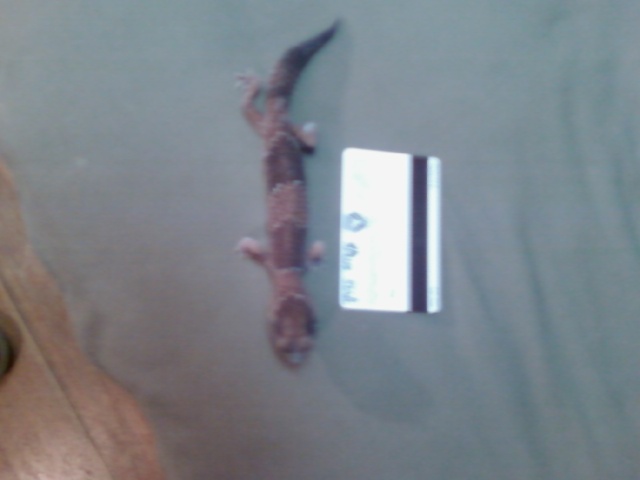 Fat-tailed gecko not eating
QuestionQUESTION: Hi Tracie,
I saw a previous answer y
Fat-tailed gecko not eating
QuestionQUESTION: Hi Tracie,
I saw a previous answer y
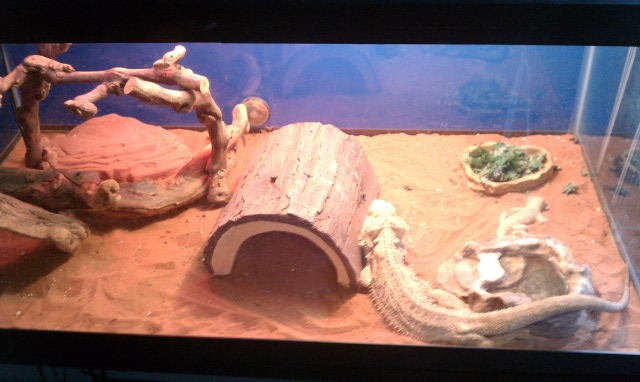 my bearded dragon wont move or eat
QuestionQUESTION: Hello my bearded dragon kiwi is 8 yea
my bearded dragon wont move or eat
QuestionQUESTION: Hello my bearded dragon kiwi is 8 yea
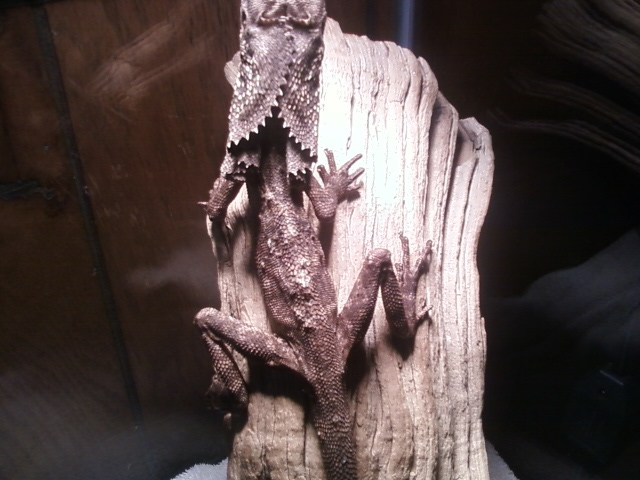 sub-Adult Female Frilled Dragon
QuestionFrilled dragon
frilled dragon
QUE
sub-Adult Female Frilled Dragon
QuestionFrilled dragon
frilled dragon
QUE
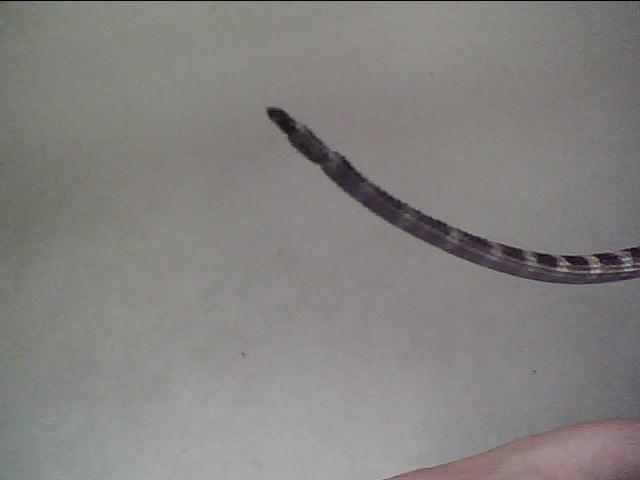 Tail rot?
Question
Tail rot?
Hi, one of my two bearded dragons lo
Tail rot?
Question
Tail rot?
Hi, one of my two bearded dragons lo
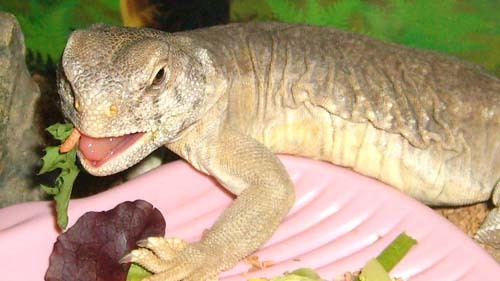 Suey has a new problem-Uncontrollable jerking
QuestionSuey eating veggies
QUESTION: Tracie,
Hi
Suey has a new problem-Uncontrollable jerking
QuestionSuey eating veggies
QUESTION: Tracie,
Hi